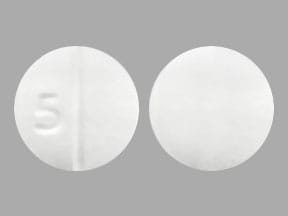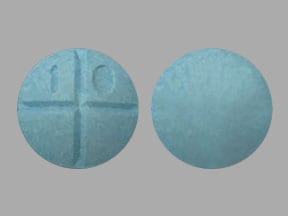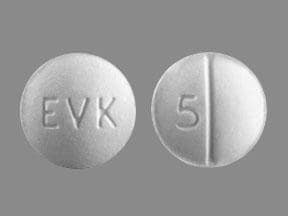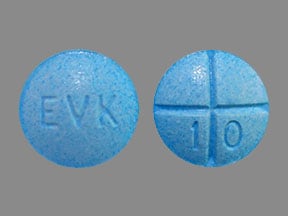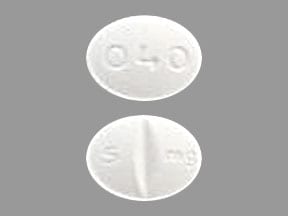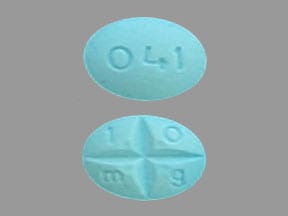Boxed Warning
Abuse potential (Adzenys ER, Adzenys XR-ODT, Dyanavel XR, Evekeo, Evekeo ODT):
Amphetamines have a high potential for abuse and dependence. Administration of amphetamines for prolonged periods of time may lead to drug dependence and must be avoided. Assess the risk of abuse prior to prescribing, and monitor for signs of abuse and dependence while on therapy. Particular attention should be paid to the possibility of subjects obtaining amphetamines for non-therapeutic use or distribution to others, and the drugs should be prescribed or dispensed sparingly.
Cardiovascular events (Evekeo):
Misuse of amphetamine may cause sudden death and serious cardiovascular adverse events.
Dosage Forms
Excipient information presented when available (limited, particularly for generics); consult specific product labeling. [DSC] = Discontinued product
Suspension Extended Release, Oral:
Adzenys ER: 1.25 mg/mL (450 mL) [contains fd&c yellow #6 (sunset yellow), methylparaben, polyethylene glycol, propylene glycol, propylparaben; orange flavor]
Generic: 1.25 mg/mL (450 mL)
Suspension Extended Release, Oral, as base:
Dyanavel XR: 2.5 mg/mL (464 mL) [contains methylparaben, polysorbate 80, propylparaben]
Tablet, Oral, as sulfate:
Evekeo: 5 mg [DSC]
Evekeo: 5 mg [scored]
Evekeo: 10 mg [DSC] [contains brilliant blue fcf (fd&c blue #1)]
Evekeo: 10 mg [scored; contains brilliant blue fcf (fd&c blue #1)]
Generic: 5 mg, 10 mg
Tablet Disintegrating, Oral, as sulfate:
Evekeo ODT: 5 mg, 10 mg, 15 mg, 20 mg
Tablet Extended Release Disintegrating, Oral, as base:
Adzenys XR-ODT: 3.1 mg, 6.3 mg, 9.4 mg, 12.5 mg, 15.7 mg, 18.8 mg
Pharmacology
Mechanism of Action
Amphetamines are noncatecholamine sympathomimetic amines that promote release of catecholamines (primarily dopamine and norepinephrine) from their storage sites in the presynaptic nerve terminals. A less significant mechanism may include their ability to block the reuptake of catecholamines by competitive inhibition. The anorexigenic effect is probably secondary to the CNS-stimulating effect; the site of action is probably the hypothalamic feeding center.
Pharmacokinetics/Pharmacodynamics
Absorption
Oral:
Immediate-release tablet: Rapid (de la Torre 2004)
Immediate-release orally-disintegrating tablet: Evekeo ODT: Cmax and AUC comparable to equivalent immediate-release dose
Distribution
Oral: Immediate-release tablet: Vd: 3 to 4 L/kg (de la Torre 2004)
Metabolism
Hepatic via oxidation, deamination, and CYP2D6
Excretion
Urine (30% to 40% unchanged; ~50% as metabolites)
Time to Peak
Oral:
Immediate-release tablet: Within 4 hours (de la Torre 2004)
Immediate-release orally-disintegrating tablet: Evekeo ODT: Median time d-amphetamine and l-amphetamine 3.5 hours (with water) and 3 hours (without water); increased with food in adults
Extended-release orally-disintegrating tablet: Adzenys XR-ODT: Median time d-amphetamine 5 hours (7 hours with food) and l-amphetamine ~5.25 hours (7.75 hours with food)
Extended-release suspension:
Adzenys ER suspension: d-amphetamine and l-amphetamine: 5 hours (median) with or without food
Dyanavel XR suspension:
Children: Median time d-amphetamine 3.9 hours and l-amphetamine 4.5 hours
Adults: 4 (2 to 7) hours
Duration of Action
Oral:
Immediate-release tablet: Evekeo: 4 to 6 hours (Jain 2017)
Extended-release orally-disintegrating tablet: Adzenys XR-ODT: 10 to 12 hours
Half-Life Elimination
Oral:
Immediate-release tablet: 12 hours (de la Torre 2004)
Immediate-release orally-disintegrating tablet: Evekeo ODT: Adults: d-amphetamine 10 hours and l-amphetamine 11.7 hours
Extended-release orally-disintegrating tablet: Adzenys XR-ODT:
Children 6 to 12 years: d-amphetamine 9 to 10 hours and l-amphetamine 10 to 11 hours
Adults: d-amphetamine 11 hours and l-amphetamine 14 hours
Extended-release suspension:
Adzenys ER:
Children 6 to 12 years: d-amphetamine 12.7 hours (mean) and l-amphetamine 15.3 hours
Adults: d-amphetamine 11.4 hours and l-amphetamine 14.1 hours
Dyanavel XR:
Children: d-amphetamine 10.43 ± 2.01 hours and l-amphetamine 12.14 ± 3.15 hours
Adults: d-amphetamine 12.36 ± 2.95 hours and l-amphetamine 15.12 ± 4.4 hours
Protein Binding
Oral: Immediate-release tablet: 16% (de la Torre 2004)
Use in Specific Populations
Special Populations Note
Body weight: Systemic exposure and maximum concentration of d- and l-amphetamine decrease as body weight increases; volume of distribution, clearance, and half-life increase as body weight increases.
Use: Labeled Indications
Attention-deficit/hyperactivity disorder: Treatment of ADHD
Exogenous obesity (immediate-release tablet only): Short-term treatment of exogenous obesity as an adjunct to caloric restriction for patients refractory to alternative therapy (eg, repeated diets, group programs, other drugs)
Narcolepsy (immediate-release tablet only): Treatment of narcolepsy
Contraindications
Hypersensitivity to amphetamine or any component of the formulation, anaphylactic reactions and angioedema have been reported; use during or within 14 days following MAO inhibitor (including linezolid or intravenous methylene blue).
Evekeo immediate-release tablet: Additional contraindications: Hypersensitivity or idiosyncrasy to amphetamine, other sympathomimetic amines, or any component of the formulation; advanced arteriosclerosis; symptomatic cardiovascular disease; moderate to severe hypertension; hyperthyroidism; agitated states; history of drug abuse; use during or within 14 days following MAO inhibitor.
Documentation of allergenic cross-reactivity for amphetamines is limited. However, because of similarities in chemical structure and/or pharmacologic actions, the possibility of cross-sensitivity cannot be ruled out with certainty.
Dosage and Administration
Dosing: Adult
Note: Administer at the lowest effective dose.
Attention-deficit/hyperactivity disorder:
Extended-release orally disintegrating tablet: Oral: 12.5 mg once daily.
Conversion: Do not substitute extended-release formulation for other amphetamine formulations on a mg-per-mg basis.
Converting from Adderall XR to Adzenys XR-ODT: Initial dose of Adzenys XR-ODT should be determined by the current dose of Adderall XR as follows:
Current Adderall XR dose of 5 mg once daily: Initial Adzenys XR-ODT dose of 3.1 mg once daily
Current Adderall XR dose of 10 mg once daily: Initial Adzenys XR-ODT dose of 6.3 mg once daily
Current Adderall XR dose of 15 mg once daily: Initial Adzenys XR-ODT dose of 9.4 mg once daily
Current Adderall XR dose of 20 mg once daily: Initial Adzenys XR-ODT dose of 12.5 mg once daily
Current Adderall XR dose of 25 mg once daily: Initial Adzenys XR-ODT dose of 15.7 mg once daily
Current Adderall XR dose of 30 mg once daily: Initial Adzenys XR-ODT dose of 18.8 mg once daily
Converting from all other amphetamine formulations to Adzenys XR-ODT: Discontinue that treatment and titrate Adzenys XR-ODT as per the recommended dosing schedule.
Extended-release suspension:
Adzenys ER: Oral: 12.5 mg once daily
Conversion: Do not substitute for other amphetamine formulations on a mg-per-mg basis.
Converting from Adderall XR to Adzenys ER: Initial dose of Adzenys ER should be determined by the current dose of Adderall XR as follows:
Current Adderall XR dose of 5 mg once daily: Initial Adzenys ER dose of 3.1 mg once daily
Current Adderall XR dose of 10 mg once daily: Initial Adzenys ER dose of 6.3 mg once daily
Current Adderall XR dose of 15 mg once daily: Initial Adzenys ER dose of 9.4 mg once daily
Current Adderall XR dose of 20 mg once daily: Initial Adzenys ER dose of 12.5 mg once daily
Current Adderall XR dose of 25 mg once daily: Initial Adzenys ER dose of 15.7 mg once daily
Current Adderall XR dose of 30 mg once daily: Initial Adzenys ER dose of 18.8 mg once daily
Converting from all other amphetamine formulations to Adzenys ER: Discontinue that treatment and titrate Adzenys ER as per the recommended dosing schedule.
Dyanavel XR: Oral: Initial: 2.5 or 5 mg once daily; may increase in 2.5 to 10 mg/day increments every 4 to 7 days until optimal response is obtained (maximum: 20 mg/day).
Note: Do not substitute for other amphetamine products on a mg-per-mg basis since base composition and pharmacokinetic profiles are not similar. If switching from other amphetamine products, discontinue that treatment, and titrate as per the recommended dosing schedule.
Exogenous obesity: Immediate-release tablet: Oral: Up to 30 mg daily in divided doses (5 to 10 mg per dose)
Narcolepsy: Immediate-release tablet: Oral: Initial: 10 mg once daily; increase daily dose in 10 mg increments at weekly intervals until optimal response is obtained; usual dosage range: 5 to 60 mg daily in divided doses
Dosing: Geriatric
Refer to adult dosing.
Dosing: Pediatric
Note: Individualize and titrate to lowest effect dose.
Attention-deficit/hyperactivity disorder (ADHD): Note: Do not substitute extended-release formulations for other amphetamine products (immediate or extended release) on a mg-per-mg basis since base composition and pharmacokinetic profiles are not similar.
Immediate release:
Orally-disintegrating tablet (eg, Evekeo ODT): Children ≥6 years and Adolescents ≤17 years: Oral: Initial: 5 mg once or twice daily; increase daily dose in 5 mg increments at weekly intervals until optimal response is obtained; first dose should be given at awakening; if additional daily doses necessary, separate dose(s) by 4- to 6-hour intervals. Maximum dose not specified; in children ≥6 years, daily doses >40 mg/day are rarely necessary
Tablet (eg, Evekeo):
Children 3 to 5 years: Oral: Initial: 2.5 mg once daily; increase daily dose in 2.5 mg increments at weekly intervals until optimal response is obtained; first dose should be given at awakening; if additional daily doses necessary, separate dose(s) by 4- to 6-hour intervals. Maximum dose not specified; in children ≥6 years, daily doses >40 mg/day are rarely necessary.
Children ≥6 years and Adolescents: Oral: Initial: 5 mg once or twice daily; increase daily dose in 5 mg increments at weekly intervals until optimal response is obtained; first doses should be given at awakening; if additional daily doses necessary, separate dose(s) by 4- to 6-hour intervals. Only in rare cases will it be necessary to exceed 40 mg daily.
Extended release:
Orally-disintegrating tablet (Adzenys XR-ODT): Children ≥6 years and Adolescents: Oral: Initial: 6.3 mg once daily in the morning; may increase in 3.1 or 6.3 mg increments at weekly intervals until optimal response or age-based maximum dose reached. Maximum daily dose: Ages 6 to 12 years: 18.8 mg/day; ages 13 to 18 years: 12.5 mg/day
To convert Adderall XR (mixed salt of single entity amphetamine product) to Adzenys XR-ODT, the following conversions may be applied:
|
Adderall XR (current once-daily dose) |
Adzenys XR-ODT (initial once-daily dose) |
|---|---|
|
5 mg |
3.1 mg |
|
10 mg |
6.3 mg |
|
15 mg |
9.4 mg |
|
20 mg |
12.5 mg |
|
25 mg |
15.7 mg |
|
30 mg |
18.8 mg |
Table converted to the following text:
Initial dose of Adzenys XR-ODT should be determined by the current dose of Adderall XR as follows:
Current Adderall XR dose of 5 mg once daily: Initial Adzenys XR-ODT dose of 3.1 mg once daily
Current Adderall XR dose of 10 mg once daily: Initial Adzenys XR-ODT dose of 6.3 mg once daily
Current Adderall XR dose of 15 mg once daily: Initial Adzenys XR-ODT dose of 9.4 mg once daily
Current Adderall XR dose of 20 mg once daily: Initial Adzenys XR-ODT dose of 12.5 mg once daily
Current Adderall XR dose of 25 mg once daily: Initial Adzenys XR-ODT dose of 15.7 mg once daily
Current Adderall XR dose of 30 mg once daily: Initial Adzenys XR-ODT dose of 18.8 mg once daily
To convert other amphetamine products to Adzenys XR-ODT: Discontinue that treatment, and then initiate and titrate Adzenys XR-ODT as per the recommended dosing schedule.
Oral suspension:
Adzenys XR: Children ≥6 years and Adolescents: Oral: Initial: 6.3 mg once daily in the morning; may increase in 3.1 or 6.3 mg increments at weekly intervals until optimal response or age-based maximum dose reached. Maximum daily dose: Ages 6 to 12 years: 18.8 mg/day; ages 13 to 18 years: 12.5 mg/day
To convert Adderall XR (mixed salt of single entity amphetamine product) to Adzenys ER, the following conversions may be applied:
|
Adderall XR (current once-daily dose) |
Adzenys ER (initial once-daily dose) |
|---|---|
|
5 mg |
3.1 mg |
|
10 mg |
6.3 mg |
|
15 mg |
9.4 mg |
|
20 mg |
12.5 mg |
|
25 mg |
15.7 mg |
|
30 mg |
18.8 mg |
Table converted to the following text:
Initial dose of Adzenys ER should be determined by the current dose of Adderall XR as follows:
Current Adderall XR dose of 5 mg once daily: Initial Adzenys ER dose of 3.1 mg once daily
Current Adderall XR dose of 10 mg once daily: Initial Adzenys ER dose of 6.3 mg once daily
Current Adderall XR dose of 15 mg once daily: Initial Adzenys ER dose of 9.4 mg once daily
Current Adderall XR dose of 20 mg once daily: Initial Adzenys ER dose of 12.5 mg once daily
Current Adderall XR dose of 25 mg once daily: Initial Adzenys ER dose of 15.7 mg once daily
Current Adderall XR dose of 30 mg once daily: Initial Adzenys ER dose of 18.8 mg once daily
To convert other amphetamine products to Adzenys ER: Discontinue that treatment, and then initiate and titrate Adzenys ER as per the recommended dosing schedule
Dyanavel XR: Children ≥6 years and Adolescents: Oral: Initial: 2.5 or 5 mg once daily in the morning; may increase in 2.5 to 10 mg/day increments every 4 to 7 days until optimal response is obtained; maximum daily dose: 20 mg/day
Exogenous obesity: Immediate-release tablet (eg, Evekeo): Children ≥12 years and Adolescents: Oral: Initial: 5 to 10 mg once daily; titrate in 5 to 10 mg increments (at a minimum of weekly intervals); maximum daily dose: 30 mg/day in divided doses
Narcolepsy: Immediate-release tablet:
Children 6 to 12 years: Oral: Initial: 5 mg once daily; increase daily dose in 5 mg increments at weekly intervals until optimal response is obtained; first doses should be given at awakening; additional daily doses (5 or 10 mg) may be necessary and should be separated by 4- to 6-hour intervals; usual daily dosage range: 5 to 60 mg daily in divided doses
Children ≥12 years and Adolescents: Oral: Initial: 10 mg once daily; increase daily dose in 10 mg increments at weekly intervals until optimal response is obtained; first doses should be given at awakening; additional daily doses (5 or 10 mg) may be necessary and should be separated by 4- to 6-hour intervals; usual daily dosage range: 5 to 60 mg daily in divided doses
Dosing adjustment for concomitant drug therapy:
CYP2D6 inhibitor or serotonergic agents: Children ≥6 years and Adolescents: Dyanavel XR: Avoid concomitant therapy if possible. If unable to avoid concomitant therapy, initiate amphetamine with lower doses and monitor closely and educate patient for signs and symptoms of serotonin syndrome particularly during amphetamine dose titration. If any signs or symptoms of serotonin syndrome occur, discontinue amphetamine and serotonergic agents immediately and initiate supportive treatment.
Administration
Oral:
Extended-release orally disintegrating tablet: Administer in the morning with or without food. Do not remove from blister until ready to administer. Using dry hands, peel backing off the blister; do not push tablet through foil. Remove tablet and immediately place on tongue and allow to disintegrate. Swallow with saliva. Do not chew or crush tablet.
Extended-release suspension: Administer in the morning with or without food; use the oral dosing dispenser provided. Administer directly into mouth from dispenser (do not add to food or mix with liquids); wash dispenser after each use. Shake bottle well prior to administration.
Immediate-release tablet: Administer with or without food; for short-term adjunct treatment of exogenous obesity, administer 30 to 60 minutes before meals. Administer the first dose on awakening; administer additional doses at intervals of 4 to 6 hours. Avoid late evening dosing.
Storage
Store at 20°C to 25°C (68°F to 77°F); excursions permitted from 15ºC to 30ºC (59ºF to 86ºF). Store orally disintegrating tablet blister packages in travel case or plastic sleeve provided.
Amphetamine Images
Drug Interactions
Acebrophylline: May enhance the stimulatory effect of CNS Stimulants. Avoid combination
Alkalinizing Agents: May decrease the excretion of Amphetamines. Management: Consider alternatives to using amphetamines and alkalinizing agents in combination. If these agents must be used together, patients should be monitored closely for excessive amphetamine effects. Consider therapy modification
Amifampridine: Agents With Seizure Threshold Lowering Potential may enhance the neuroexcitatory and/or seizure-potentiating effect of Amifampridine. Monitor therapy
Ammonium Chloride: May decrease the serum concentration of Amphetamines. This effect is likely due to an enhanced excretion of amphetamines in the urine. Monitor therapy
Antacids: May decrease the excretion of Amphetamines. Monitor therapy
Antihistamines: Amphetamines may diminish the sedative effect of Antihistamines. Monitor therapy
Antihypertensive Agents: Amphetamines may diminish the antihypertensive effect of Antihypertensive Agents. Monitor therapy
Antipsychotic Agents: May diminish the stimulatory effect of Amphetamines. Monitor therapy
Ascorbic Acid: May decrease the serum concentration of Amphetamines. Monitor therapy
AtoMOXetine: May enhance the hypertensive effect of Sympathomimetics. AtoMOXetine may enhance the tachycardic effect of Sympathomimetics. Monitor therapy
BuPROPion: May enhance the neuroexcitatory and/or seizure-potentiating effect of Agents With Seizure Threshold Lowering Potential. Monitor therapy
Cannabinoid-Containing Products: May enhance the tachycardic effect of Sympathomimetics. Exceptions: Cannabidiol. Monitor therapy
Carbonic Anhydrase Inhibitors: May decrease the excretion of Amphetamines. Exceptions: Brinzolamide; Dorzolamide. Monitor therapy
Cocaine (Topical): May enhance the hypertensive effect of Sympathomimetics. Management: Consider alternatives to use of this combination when possible. Monitor closely for substantially increased blood pressure or heart rate and for any evidence of myocardial ischemia with concurrent use. Consider therapy modification
CYP2D6 Inhibitors (Moderate): May increase the serum concentration of Amphetamines. Monitor therapy
CYP2D6 Inhibitors (Strong): May increase the serum concentration of Amphetamines. Exceptions: FLUoxetine; PARoxetine. Monitor therapy
Doxofylline: Sympathomimetics may enhance the adverse/toxic effect of Doxofylline. Monitor therapy
Esketamine: May enhance the hypertensive effect of CNS Stimulants. Monitor therapy
Ethosuximide: Amphetamines may diminish the therapeutic effect of Ethosuximide. Amphetamines may decrease the serum concentration of Ethosuximide. Monitor therapy
Gastrointestinal Acidifying Agents: May decrease the serum concentration of Amphetamines. Monitor therapy
Guanethidine: May enhance the arrhythmogenic effect of Sympathomimetics. Guanethidine may enhance the hypertensive effect of Sympathomimetics. Monitor therapy
Iobenguane Radiopharmaceutical Products: Amphetamines may diminish the therapeutic effect of Iobenguane Radiopharmaceutical Products. Management: Discontinue all drugs that may inhibit or interfere with catecholamine transport or uptake for at least 5 biological half-lives before iobenguane administration. Do not administer these drugs until at least 7 days after each iobenguane dose. Avoid combination
Iobenguane Radiopharmaceutical Products: CNS Stimulants may diminish the therapeutic effect of Iobenguane Radiopharmaceutical Products. Management: Discontinue all drugs that may inhibit or interfere with catecholamine transport or uptake for at least 5 biological half-lives before iobenguane administration. Do not administer these drugs until at least 7 days after each iobenguane dose. Avoid combination
Ioflupane I 123: Amphetamines may diminish the diagnostic effect of Ioflupane I 123. Monitor therapy
Iohexol: Agents With Seizure Threshold Lowering Potential may enhance the adverse/toxic effect of Iohexol. Specifically, the risk for seizures may be increased. Management: Discontinue agents that may lower the seizure threshold 48 hours prior to intrathecal use of iohexol. Wait at least 24 hours after the procedure to resume such agents. In nonelective procedures, consider use of prophylactic anticonvulsants. Consider therapy modification
Iomeprol: Agents With Seizure Threshold Lowering Potential may enhance the adverse/toxic effect of Iomeprol. Specifically, the risk for seizures may be increased. Management: Discontinue agents that may lower the seizure threshold 48 hours prior to intrathecal use of iomeprol. Wait at least 24 hours after the procedure to resume such agents. In nonelective procedures, consider use of prophylactic anticonvulsants. Consider therapy modification
Iopamidol: Agents With Seizure Threshold Lowering Potential may enhance the adverse/toxic effect of Iopamidol. Specifically, the risk for seizures may be increased. Management: Discontinue agents that may lower the seizure threshold 48 hours prior to intrathecal use of iopamidol. Wait at least 24 hours after the procedure to resume such agents. In nonelective procedures, consider use of prophylactic anticonvulsants. Consider therapy modification
Methenamine: May decrease the serum concentration of Amphetamines. This effect is likely due to an enhanced excretion of amphetamines in the urine. Monitor therapy
Monoamine Oxidase Inhibitors: May enhance the hypertensive effect of Amphetamines. While linezolid and tedizolid may interact via this mechanism, management recommendations differ from other monoamine oxidase inhibitors. Refer to monographs specific to those agents for details. Avoid combination
Multivitamins/Fluoride (with ADE): May decrease the serum concentration of Amphetamines. More specifically, the ascorbic acid (vitamin C) in many multivitamins may decrease amphetamine concentrations. Monitor therapy
Multivitamins/Minerals (with ADEK, Folate, Iron): May decrease the serum concentration of Amphetamines. Monitor therapy
Multivitamins/Minerals (with AE, No Iron): May decrease the serum concentration of Amphetamines. Specifically, vitamin C may impair absorption of amphetamines. Monitor therapy
Opioid Agonists: Amphetamines may enhance the analgesic effect of Opioid Agonists. Monitor therapy
PHENobarbital: Amphetamines may decrease the serum concentration of PHENobarbital. Monitor therapy
Phenytoin: Amphetamines may decrease the serum concentration of Phenytoin. Monitor therapy
Proton Pump Inhibitors: May increase the absorption of Amphetamine. Monitor therapy
Quinolones: Amphetamines may enhance the cardiotoxic effect of Quinolones. Monitor therapy
Selective Serotonin Reuptake Inhibitors (Strong CYP2D6 Inhibitors): Amphetamines may enhance the serotonergic effect of Selective Serotonin Reuptake Inhibitors (Strong CYP2D6 Inhibitors). This could result in serotonin syndrome. Selective Serotonin Reuptake Inhibitors (Strong CYP2D6 Inhibitors) may increase the serum concentration of Amphetamines. Management: Monitor for increased amphetamine toxicities, including signs and symptoms of serotonin syndrome/serotonin toxicity (eg, hyperreflexia, clonus, hyperthermia, diaphoresis, tremor, autonomic instability) when these agents are combined. Monitor therapy
Serotonergic Agents (High Risk): Amphetamines may enhance the serotonergic effect of Serotonergic Agents (High Risk). This could result in serotonin syndrome. Management: Monitor for signs and symptoms of serotonin syndrome/serotonin toxicity (eg, hyperreflexia, clonus, hyperthermia, diaphoresis, tremor, autonomic instability, mental status changes) when these agents are combined. Exceptions: Amitriptyline; Amoxapine; ClomiPRAMINE; Desipramine; Dothiepin; Doxepin (Systemic); Doxepin (Topical); FLUoxetine; Imipramine; Isocarboxazid; Linezolid; Lofepramine; Melitracen [INT]; Methylene Blue; Moclobemide; Nortriptyline; PARoxetine; Phenelzine; Protriptyline; Tranylcypromine; Trimipramine. Monitor therapy
Solriamfetol: Sympathomimetics may enhance the hypertensive effect of Solriamfetol. Monitor therapy
Solriamfetol: CNS Stimulants may enhance the hypertensive effect of Solriamfetol. Monitor therapy
Sympathomimetics: May enhance the adverse/toxic effect of other Sympathomimetics. Monitor therapy
Tedizolid: May enhance the hypertensive effect of Sympathomimetics. Tedizolid may enhance the tachycardic effect of Sympathomimetics. Monitor therapy
Tricyclic Antidepressants: May enhance the adverse/toxic effect of Amphetamines. Tricyclic Antidepressants may potentiate the cardiovascular effects of Amphetamines. Amphetamines may enhance the serotonergic effect of Tricyclic Antidepressants. This could result in serotonin syndrome. Management: Monitor for signs and symptoms of serotonin syndrome/serotonin toxicity (eg, hyperreflexia, clonus, hyperthermia, diaphoresis, tremor, autonomic instability, mental status changes) and increased cardiovascular effects when these agents are combined. Monitor therapy
Urinary Acidifying Agents: May decrease the serum concentration of Amphetamines. Monitor therapy
Test Interactions
Amphetamines may elevate plasma corticosteroid levels; may interfere with urinary steroid determinations.
Adverse Reactions
1% to 10%:
Central nervous system: Insomnia (children: 4%), emotional lability (children: 3%)
Gastrointestinal: Decreased appetite (children: 4%), upper abdominal pain (children: 4%), abdominal pain (children: 3%)
Respiratory: Allergic rhinitis (children: 4%), epistaxis (children: 4%)
Miscellaneous: Accidental injury (children: 3%)
Frequency not defined:
Central nervous system: Drug abuse, drug dependence
Gastrointestinal: Diarrhea
<1%, postmarketing, and/or case reports: Acute myocardial infarction, aggressive behavior, alopecia, anaphylaxis, angioedema, anorexia, blurred vision, bruxism, cardiomyopathy, change in libido, constipation, dermatillomania, dizziness, dysgeusia, dyskinesia, dysphoria, euphoria, exacerbation of Gilles de la Tourette syndrome, fatigue, frequent erections, gastrointestinal disease, headache, hypersensitivity reaction, impotence, increased blood pressure, irritability, mydriasis, nausea, outbursts of anger, overstimulation, palpitations, paresthesia, peripheral vascular disease, prolonged erection, psychosis, Raynaud's disease, restlessness, rhabdomyolysis, skin rash, Stevens-Johnson syndrome, tachycardia, talkativeness, tic disorder (including exacerbation), toxic epidermal necrolysis, tremor, unpleasant taste, urticaria, vocal tics (including exacerbation), weight loss, xerostomia
Warnings/Precautions
Concerns related to adverse effects:
- Cardiovascular events: [US Boxed Warning; Immediate release]: Misuse may cause serious cardiovascular events including sudden death. Consistent with other studies, a large retrospective cohort study involving 1,200,438 children, adolescents, and young adults (aged 2 to 24 years) prescribed methylphenidate, dexmethylphenidate, dextroamphetamines, amphetamine salts, pemoline, or atomoxetine found no evidence that current use of an ADHD medication increased risk for sudden cardiac death, acute MI, or stroke (Cooper 2011). Stimulants should be avoided in the patients with known structural cardiac abnormalities, cardiomyopathy, serious heart rhythm abnormalities, coronary artery disease, Marfan syndrome, or other serious cardiac problems. Some products are contraindicated in patients with moderate or severe hypertension. Prior to initiating stimulant, assess medical history and family history of sudden death or ventricular arrhythmia; conduct a physical exam to assess for cardiac disease; patients should receive further evaluation if findings suggest cardiac disease, such as ECG and echocardiogram. Promptly conduct cardiac evaluation in patients who develop exertional chest pain, unexplained syncope, or any other symptoms of cardiac disease during stimulant treatment.
- CNS effects: May impair the ability to engage in potentially hazardous activities; patients must be cautioned about performing tasks that require mental alertness (eg, operating machinery or driving).
- Hypersensitivity: Angioedema and anaphylactic reactions have been reported.
- Hypertension/tachycardia: May occur; monitor blood pressure and heart rate in all patients.
- Peripheral vasculopathy: Stimulants are associated with peripheral vasculopathy, including Raynaud phenomenon; signs/symptoms are usually mild and intermittent, and generally improve with dose reduction or discontinuation. Peripheral vasculopathy effects have been observed at different times, at therapeutic doses, and in all age groups. Digital ulceration and/or soft tissue breakdown have been observed rarely; monitor for digital changes during therapy and seek further evaluation (eg, rheumatology) if necessary (Syed 2008).
- Serotonin syndrome: Potentially life-threatening serotonin syndrome (SS) may occur when amphetamine is used in combination with other serotonergic agents (eg, selective serotonin reuptake inhibitors, serotonin norepinephrine reuptake inhibitors, triptans, tricyclic antidepressants, fentanyl, lithium, tramadol, buspirone, St. John's wort, tryptophan), agents that impair metabolism of serotonin (eg, monoamine oxidase inhibitors) or CYP2D6 inhibitors that impair metabolism of amphetamine. Concomitant use with monoamine oxidase inhibitors is contraindicated. If concomitant use of amphetamine with serotonergic drugs or CYP2D6 inhibitors is indicated, initiate amphetamine at a low dose and monitor patient closely for signs and symptoms of SS. Discontinue treatment (and any concomitant serotonergic agent) immediately if signs/symptoms arise.
- Visual disturbance: Difficulty in accommodation and blurred vision has been reported with the use of stimulants.
Disease-related concerns:
- Abuse potential: [US Boxed Warning]: Potential for drug abuse and dependency exists; prolonged use may lead to drug dependency and must be avoided. Assess the risk for abuse prior to prescribing, and monitor for signs of abuse and dependence while on therapy. Consider the possibility of patients obtaining amphetamines for non-therapeutic use or distribution to others; prescribe sparingly. Use of immediate-release formulation is contraindicated in patients with history of drug abuse. Write prescriptions for the smallest quantity consistent with good patient care to minimize possibility of overdose.
- Cardiovascular disease: CNS stimulants may increase heart rate and blood pressure; in pediatric patients, the observed mean increase in heart rate was 3 to 6 bpm and blood pressure was 2 to 4 mm Hg. Use with caution in patients with hypertension, heart failure, recent MI, ventricular arrhythmia, and other cardiovascular conditions that might be exacerbated by increases in blood pressure or heart rate. Some products are contraindicated in patients with moderate to severe hypertension or hyperthyroidism.
- Psychiatric disorders: Use with caution in patients with preexisting psychosis (may exacerbate symptoms of behavior and thought disorder) or bipolar disorder (may induce mixed/manic episode). New-onset psychosis or mania may occur with stimulant use. Patients should be screened for bipolar disorder and risk factors for developing a manic episode prior to treatment; consider discontinuation if psychotic or manic symptoms (eg, delusional thinking, hallucinations, mania). May be associated with aggressive behavior or hostility (causal relationship not established); monitor for development or worsening of these behaviors.
- Seizure disorder: Limited information exists regarding stimulant use in seizure disorder. Whereas patients with ADHD are at an increased risk for seizure activity compared to the general population, a retrospective study using drug claims data showed that the use of stimulant medications was associated with a lower risk (Cortese 2013; Wiggs 2018). Manufacturers of some stimulants recommend discontinuing therapy if seizures occur.
- Tourette syndrome/tics: Use with caution in patients with Tourette syndrome or other tic disorders. Stimulants may exacerbate tics (motor and phonic) and Tourette syndrome; however, evidence demonstrating increased tics is limited. Evaluate for tics and Tourette syndrome prior to therapy initiation (AACAP [Murphy 2013]; Pliszka 2007).
Concurrent drug therapy issues:
- Drug-drug interactions: Potentially significant interactions may exist, requiring dose or frequency adjustment, additional monitoring, and/or selection of alternative therapy. Consult drug interactions database for more detailed information.
Special populations:
- Pediatric: Appetite suppression may occur, particularly in children. Use of stimulants has been associated with weight loss and slowing of growth rate; monitor growth rate and weight during treatment. Monitor weight during therapy; treatment interruption may be necessary in patients who are not increasing in height or gaining weight as expected.
Dosage form specific issues:
- Intestinal necrosis: Adzenys ER: Cases of intestinal necrosis, including some deaths, have been reported with the concomitant use of sodium polystyrene sulfonate and sorbitol, two of the inactive ingredients in Adzenys ER. In these cases, patients were administered sodium polystyrene sulfonate at doses greater than 200 times the amount present in Adzenys ER, however no absolute safe levels for the interaction of sodium polystyrene sulfonate and sorbitol have been established.
Other warnings/precautions:
- Discontinuation of therapy: Abrupt discontinuation following high doses or for prolonged periods may result in symptoms for withdrawal.
Monitoring Parameters
Cardiac evaluation should be completed at baseline and on any patient who develops exertional chest pain, unexplained syncope, and any symptom of cardiac disease during treatment with stimulants. Monitor blood pressure and heart rate (baseline, following dose increases and periodically during treatment); growth (weight and height) and appetite in children; weight in adults; signs of peripheral vasculopathy (eg, digital changes); sleep and behavioral changes. Assess for risk of abuse prior to prescribing and signs of misuse, abuse, or addiction throughout treatment (NICE 2018).
Pregnancy
Pregnancy Considerations
Information related to use of amphetamine in pregnancy is limited (Maurovich-Horvat 2013). The majority of human data are based on illicit amphetamine/methamphetamine exposure and not from therapeutic maternal use (Golub 2005). Use of amphetamines during pregnancy may lead to an increased risk of premature birth and low birth weight; newborns may experience symptoms of withdrawal. Behavioral problems may also occur later in childhood (LaGasse 2012). Newborns should be monitored for agitation, irritability, excessive drowsiness, or feeding difficulties
Data collection to monitor pregnancy outcomes following exposure to amphetamine is ongoing. Healthcare providers are encouraged to enroll females exposed to amphetamine during pregnancy in the National Pregnancy Registry for Psychostimulants (1-866-961-2388 and/or https://womensmentalhealth.org/clinical-and-research-programs/pregnancyregistry/othermedications/).
Patient Education
What is this drug used for?
- It is used to treat attention deficit problems with hyperactivity.
- It is used to treat narcolepsy.
- It is used to treat obesity.
- It may be given to you for other reasons. Talk with the doctor.
Frequently reported side effects of this drug
- Dry mouth
- Lack of appetite
- Trouble sleeping
- Constipation
- Weight loss
- Nausea
- Vomiting
- Diarrhea
- Bad taste in mouth
- Anxiety
- Restlessness
- Loss of strength and energy
- Abdominal pain
Other side effects of this drug: Talk with your doctor right away if you have any of these signs of:
- Fast heartbeat
- Abnormal heartbeat
- Severe headache
- Tremors
- Vision changes
- Urinary tract infection like blood in the urine, burning or painful urination, passing a lot of urine, fever, lower abdominal pain, or pelvic pain.
- Seizures
- Abnormal movements
- Sores on fingers or toes
- Change in color of hands or feet from pale to blue or red
- Burning or numbness of the hands or feet
- Cold sensation of extremities
- Painful extremities
- Dark urine
- Unable to pass urine
- Change in amount of urine passed
- Muscle pain
- Muscle weakness
- Sensing things that seem real but are not
- Mood changes
- Behavioral changes
- Serotonin syndrome like dizziness, severe headache, agitation, sensing things that seem real but are not, fast heartbeat, abnormal heartbeat, flushing, tremors, sweating a lot, change in balance, severe nausea, or severe diarrhea.
- Sexual dysfunction
- Sex drive changes
- Erection that lasts more than 4 hours
- Severe cerebrovascular disease like change in strength on one side is greater than the other, trouble speaking or thinking, change in balance, or vision changes.
- Shortness of breath
- Chest pain
- Severe dizziness
- Passing out
- Depression like thoughts of suicide, anxiety, emotional instability, or confusion.
- Signs of a significant reaction like wheezing; chest tightness; fever; itching; bad cough; blue skin color; seizures; or swelling of face, lips, tongue, or throat.
Note: This is not a comprehensive list of all side effects. Talk to your doctor if you have questions.
Consumer Information Use and Disclaimer: This information should not be used to decide whether or not to take this medicine or any other medicine. Only the healthcare provider has the knowledge and training to decide which medicines are right for a specific patient. This information does not endorse any medicine as safe, effective, or approved for treating any patient or health condition. This is only a brief summary of general information about this medicine. It does NOT include all information about the possible uses, directions, warnings, precautions, interactions, adverse effects, or risks that may apply to this medicine. This information is not specific medical advice and does not replace information you receive from the healthcare provider. You must talk with the healthcare provider for complete information about the risks and benefits of using this medicine.
